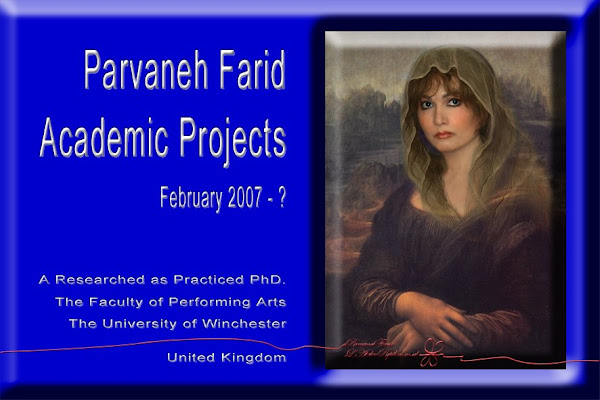Sunday, 13 July 2014
Dances of the Lines
Theme:
"Dances of the Lines" is yet again another workshop/gallery which
attempts to examine the main theme of "Translating the Lines" which
is the title of my “Practice as Research” visual and performing arts project.
For that I
particularly observe and analyse those aspects of my life experiences and
understandings – within the environmental context of my embracing cultures -
which help me to recognise the movement and formation of invisible lines of
imaginations and the process of their translation into the stylised and visible
lines which are called “the Arts”.
Doing
that, my analytical observations remain very personal and subjective. In other
words I regard myself as the subject of a case study - auto ethnography – My
personal feelings and expressions which are provoked by during this part of my
case study are then translated into a series of drawing and calligraphy work.
This
workshop/gallery is part of a more comprehensive and systematic academic
project which I am doing at the University of Winchester; “Translating the
Lines”
“Translating
the Lines” is a Practice as Research (PaR) Art Project which attempts to
examine the nature of the “Line” -visible & invisible- and its paradigm(s)
of existence.
This research inquiry is made in the form
of a subjective process of observation and understanding by this
British-Iranian born multimedia artist, whose initial exposure to the concept of the Line formed within the
context of Persian culture before developing its application to her art within
the paradigms of the western academic
world.
Taken from the accepted paradigm of the
“Line”, which is an abstract single dimensional phenomenon within the concrete
three dimensional existence, the artist argues that what is commonly referred
to as the “Line” is nothing but the documentation of the performance of a
movement of an abstract phenomenon -with no dimension- against another one
within the paradigm of space and time with the use of some form of technology -
in its simpler form, pen and paper.
Accepting the above statement invites us to
believe that all “Lines” are “Invisible” traces of a kind of performance and
what is referred to as the “Visible Line” could be only the “Visible”
documentation of what is “Invisible” in its nature. However the recording could
also be “Invisible” where it is saved in the “Memory” of the “Human”.
In her practice, the artist endeavours to
develop some form of two & three dimensional visual recording of the
performance of the “Invisible Lines”, which are influenced by
her selective cultural references before being interpreted and stylised via her
innovative and artistic mind.
The above image
is a digital documentation of a culturally charged performance of a series of
imaginary invisible lines of a dance inside the mind of the artist which
through a spontaneous process between the mind and the body is translated into
mechanical movements of her hand, using the “Illustrator” software, while the
visual sense remains in charge of the accuracy and faithfulness of the documentation.
---------------------------------------------
This study will attempt to be an
innovative Practice as Research of the behaviour of visual documentation of
“Lines” in 2 & 3 dimensional art formats.
Interdisciplinary aspects of
recording are practiced as researched; e.g. hand drawing, digital drawing,
calligraphy, sculpture as well as digital recording and the use of internet communication.
Two
dimensional recording: To practice as research two dimensional recording,
inquiry is launched into the visible and invisible lines of thought and
figurative poetry of three Persian female poetesses of the mid 19th
to 20th century.
1.
Tahirih-Qurratu'l-`Ayn-Fátimih
Baraghání (1814/1817–1852)
2.
Parvin Etesami (1907 – 1941)
3.
Forough Farrokhzad (1935 - 1967)
---------------------------------
Key Questions:
1. What is the origin of the “Line”?
2. Does the “Line” exist outside the concept of place and
time?
3. What is the nature of the “Visible Line” and
“Invisible Line”?
4. Is the “Line” a “Concrete Phenomenon” or a “Performatic Concept” (performance
related concept) which is defined by the “Movement” of a phenomenon / article
within the axes of place and time?
5. Could it be said that what is commonly understood as
the “Line” is a softcopy of a recording of the trace of a performance; or a
movement on the canvas of the memory of the onlooker; or a hardcopy form of
recording of the trace of a performance with the use of some technological
device such as pen and paper?
6. What is the significance of the “Line” in the “Arts”?
In other words, does the “Arts” refer to documentation of the “Invisible Lines”
which are stylised through the subjective mind of the artist or other paradigms
should be considered?
7. Are the various disciplines of art of the same nature?
8. How the performance
of an “Invisible Line” can be documented in a “Visual” format
Subscribe to:
Post Comments (Atom)

No comments:
Post a Comment